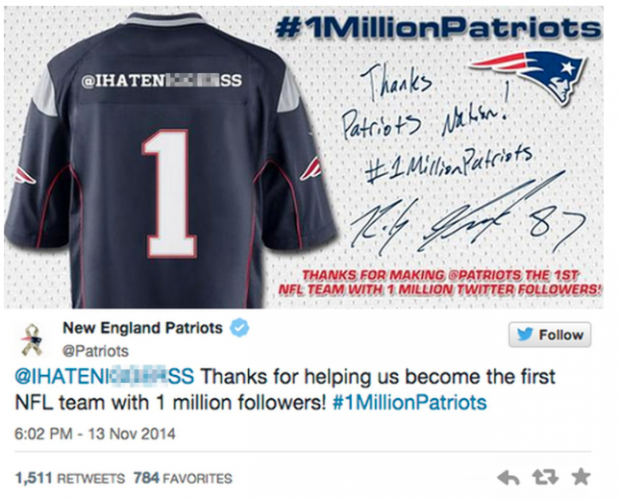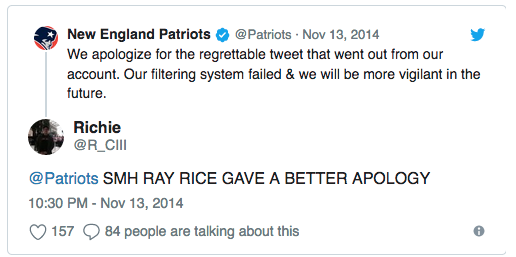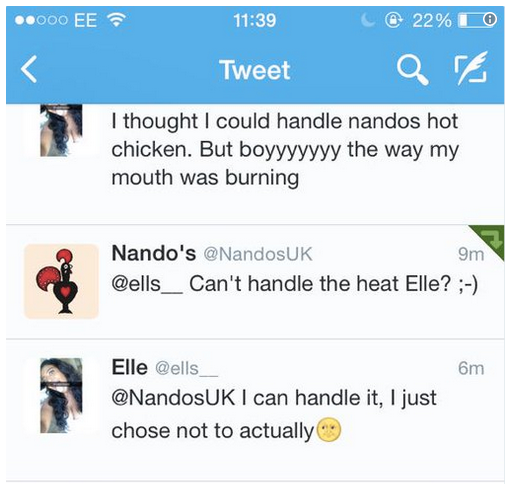The Things Brands Do on Social Media That People Hate
Outrage is the fastest-spreading emotion on social media, according to multiple studies. People love to hate, and they’ll happily hate your brand if you give them the right reason.
Whether you see a raging firestorm of hostile tweets as free marketing or a living nightmare, this post is for you. Turns out there are endless ways for a brand to stumble across the line into irritating, phony or outright offensive behaviour.
Here are our some of our favourite ways to annoy and alienate your followers…
14 things brands do on social media that people hate
1. Oblivious self-promotion
Yes, brands are on social media to sell. Your audience isn’t going to hold it against you, for the most part. Unless you just won’t stop selling.

Not everything is about you, Cinnabon.
When you’re building your social media calendar try to follow the 80/20 rule: eighty percent useful (i.e., informative, entertaining, awe-inspiring, etc.) versus twenty percent promotional.
Or, another way of thinking about it: your audience is composed of human beings with thoughts and feelings.
2. Too much AI
Speaking of human beings, consider talking like one, too.
According to Pew Research, 66 percent of Americans have heard of social media bots, and 80 percent of those people think bots are bad.

If you’re considering automating your social media—whether it’s a customer service chatbot or a pay-for-Instagram-followers service—take a moment to consider how badly it could go.
Unless a booking assistant bot is actually faster and more convenient than the alternative methods, don’t risk annoying your potential customers.
Even more problematic: using a bot to automate your social media interactions (eg., retweeting certain hashtags or following/retweeting certain users).
Remember when the Patriots’ Twitter account managed to automatically post this image?

Maintain a human touch on social.
3. Non-apologies
Whether you’ve inconvenienced one person or offended millions, take the situation as seriously as they do.

This apology from the Patriots apparently looked fine to the people who approved it, but it missed the mark for two reasons:
A) it dodges blame,
B) the language is inadequate given the offense.
Some key ingredients of a good apology:
- Accept responsibility
- Acknowledge the other person’s feelings
- Don’t make excuses
- Commit to being better
- Try not to speak like a character from Kafka’s The Trial
4. Not listening

Social media is not a billboard campaign. When you’re crafting every post with the goal of actively encouraging engagement, at some point you’re going to receive less-than-positive feedback.
Don’t ignore complaints. Not responding to negative feedback is its own crystal-clear response. Not only can your audience see you cold-shouldering other customers, you’re missing out on an opportunity to transform the situation into a positive experience.
What’s the best way to get fewer complaints? Learn from the ones you do get.
People aren’t shy about telling you what needs to change. To that end, a social listening strategy can help you gauge customer mood across social media platforms, and act on it.
5. Thirsty customer service

Yes, brands need to listen. On the other hand, they need to avoid being creepy and invasive. In other words: if you are a chicken restaurant don’t flirt with people.
Sixty-four percent of customers only want a brand to chime in when they’re being directly addressed. It’s a double standard, but if people are out there talking you up it can be weird if you start chatting back.
6. Automatic cross-posting
Nothing says “I don’t care about this platform or the people who use it” more clearly than a post that was clearly meant for another platform.

This tweet is a perfect example of ineffective cross-posting. Twitter users are never going to click through to see an image on Instagram. (I mean, the load times!) And why would anyone say “link in bio” on Twitter, when you can easily post a link?
At best this tweet looks lazy, at worst incompetent.
Craft a new post for each platform. This isn’t a huge task, it just means small tweaks to caption length, image format, and vocabulary. It’s arguably easier than getting your apostrophes right.
7. Posting clickbait
“The best way to convert a potential customer is by misleading them right off the bat,” said no one, ever.

Yes we love clicks. But there’s a difference between compulsive, mindless traffic and a person who has been encouraged to take the first step in initiating a valuable relationship for both parties.
If you’re exploiting your audience’s lizard-brain to draw them in, they’ll figure it out sooner or later. Probably in micro-seconds. Probably even as they click the link they’re already annoyed at themselves (for falling for it) and you (for making them fall for it.)
This is just not how trust is built.
8. Posting engagement bait
One fraction of a step above clickbait (and still on Facebook’s radar as a spammy practice that the algorithm will seek out and punish) is engagement bait.